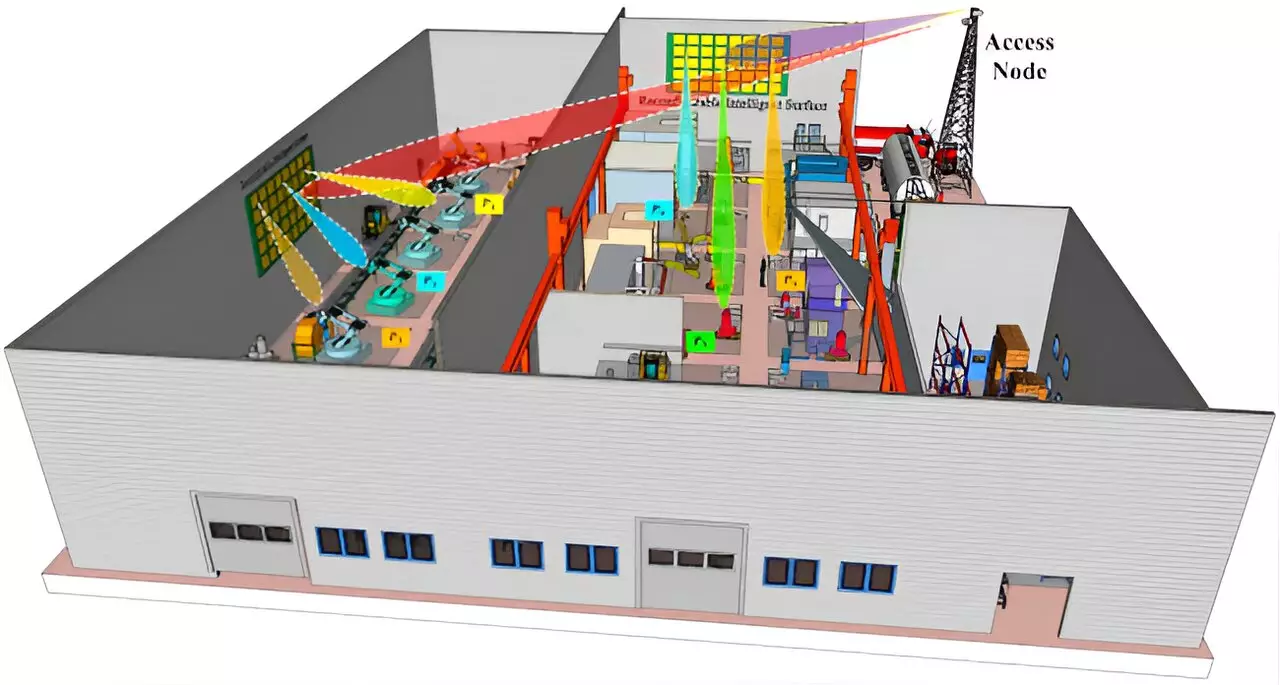A team of engineers from the University of Glasgow, alongside colleagues from the U.K. and Australia, have made a significant breakthrough in the realm of wireless communications. This breakthrough has the potential to revolutionize the way we pinpoint the locations of people and objects indoors. By enhancing the capabilities of Reconfigurable Intelligent Surfaces (RIS), a form of emerging wireless communication technology, the team has opened up a plethora of future applications for this technology.
Reconfigurable Intelligent Surfaces, or RIS, are flat surfaces equipped with programmable elements that can manipulate electromagnetic waves, particularly the high-frequency signals used in wireless communications. By strategically placing sheets of RIS on walls and ceilings indoors, these surfaces can intercept wireless signals from outside and intelligently reflect, redirect, and focus them to enhance performance. As RIS technology becomes more integrated into existing 5G and future 6G networks, it holds the promise of addressing issues with established positioning technologies like GPS.
Professor Qammer Abbasi, from the University of Glasgow, highlighted the potential of RIS technology in improving indoor location-finding tasks. While GPS is effective outdoors, its performance is significantly diminished indoors due to signal weakening caused by walls and electronic interference. RIS has the capability to precisely locate devices and their users by understanding communication signals, leading to a host of applications such as enhancing call quality and improving indoor navigation for the visually impaired.
To explore the full potential of RIS technology for location-finding, the research team set up a prototype at the University of Glasgow. This 1.3m-square RIS contained 4,096 elements and was paired with two universal serial radio peripherals to transmit and receive wireless signals. Through a series of experiments, the team configured the RIS to reflect signals effectively and used machine learning algorithms to analyze signal fingerprints for accurate location pinpointing.
Dr. Syed Tariq Shah emphasized the versatility of RIS technology in shaping and directing wireless signals for various applications. From managing crowds at public events to tracking inventory in warehouses, the possibilities are vast once RIS devices become more widespread in communications networks. The research opens up avenues for active positioning of signals from wireless devices, addressing complex localization challenges in indoor environments.
Professor Muhmmad Imran, a key figure in the University of Glasgow’s Communications, Sensing, and Imaging Hub, underscored the significance of this research in advancing indoor communication technologies. This work signifies a major milestone in solving intricate localization problems in indoor environments, paving the way for a future where precise indoor positioning and communication are seamlessly integrated into our daily lives.
The research conducted by the University of Glasgow and their collaborators marks a watershed moment in the realm of indoor communication technologies. By enhancing the capabilities of Reconfigurable Intelligent Surfaces, this breakthrough has the potential to transform how we navigate and communicate in indoor spaces. As RIS technology continues to evolve and integrate into existing communication networks, the future of indoor communication looks brighter than ever before.


Leave a Reply